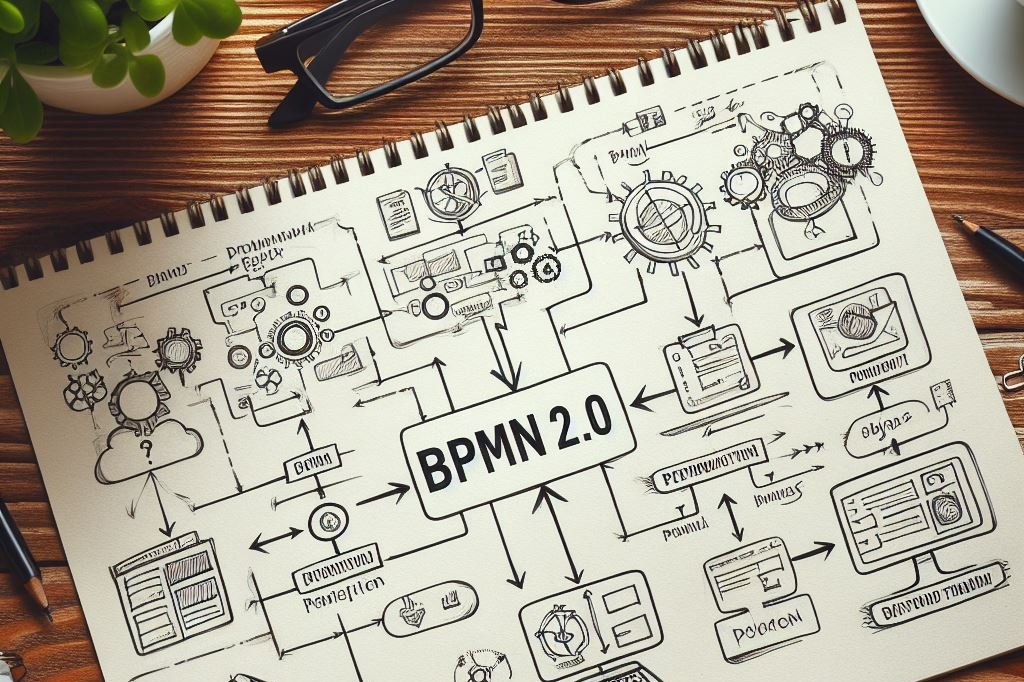Business Process Model and Notation (BPMN) 2.0 is a standardized graphical notation for representing business processes in a visual manner. It provides a comprehensive and easily understandable way to depict complex business processes, making it a valuable tool for business analysts, process designers, and other stakeholders involved in process management. BPMN 2.0 is maintained by the Object Management Group (OMG), an international consortium that develops and maintains standards for various industries.
Purpose of BPMN
BPMN aims to provide a standardized notation that allows organizations to understand and document their business processes comprehensively. It facilitates communication between different stakeholders by providing a common visual language for discussing, designing, and managing business processes.
Key Elements
BPMN 2.0 uses a set of graphical elements to represent different aspects of a business process.
The primary elements include:
Flow Objects:
- Activities: Represent tasks or work that needs to be performed.
- Events: Mark points in the process where something happens.
- Gateways: Represent decision points or branching in the process flow.
Connecting Objects:
- Sequence Flow: Indicates the order in which activities are performed.
- Message Flow: Represents communication between different participants.
Swimlanes:
- Pools: Represent participants in a process (e.g., different departments, organizations).
- Lanes: Sub-divide pools to show responsibilities or roles within a participant.
Artifacts:
- Data Objects: Represent information exchanged between activities.
- Annotations: Provide additional information about elements in the diagram.
Process Modeling
BPMN enables the modeling of processes at various levels of detail, from high-level overviews to detailed subprocesses. Processes are typically modeled using a combination of flow objects, connecting objects, and swimlanes.
Collaboration and Choreography
BPMN allows the modeling of collaborations between different participants. Choreography diagrams show interactions between participants without specifying the internal details of each participant’s process.
Execution Semantics
BPMN 2.0 includes an execution semantics specification, which means that it provides a basis for implementing processes in a way that can be executed by process engines. This allows for the automation of business processes based on BPMN models.
Extensibility
BPMN is designed to be extensible, allowing organizations to customize and extend the notation to meet their specific needs. This extensibility is facilitated through the use of extensions and annotations.
Tool Support
Numerous software tools support BPMN, providing users with the ability to create, edit, and analyze BPMN diagrams. These tools often include features such as simulation, validation, and export/import capabilities.
One representative is the online tool bpmn.io which can be operated directly via the browser without any further installation and is available free of charge.
Standardization
BPMN is an industry-standard maintained by the OMG. This ensures consistency and interoperability across different tools and platforms, promoting a common understanding of business processes.
In summary, BPMN 2.0 is a powerful and widely adopted standard for visually representing and documenting business processes. Its comprehensiveness, standardization, and support for execution make it a valuable asset in business process management and automation.
To learn more about BPMN and see concrete examples of its use, check out my other posts on the topic.
